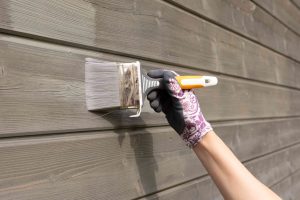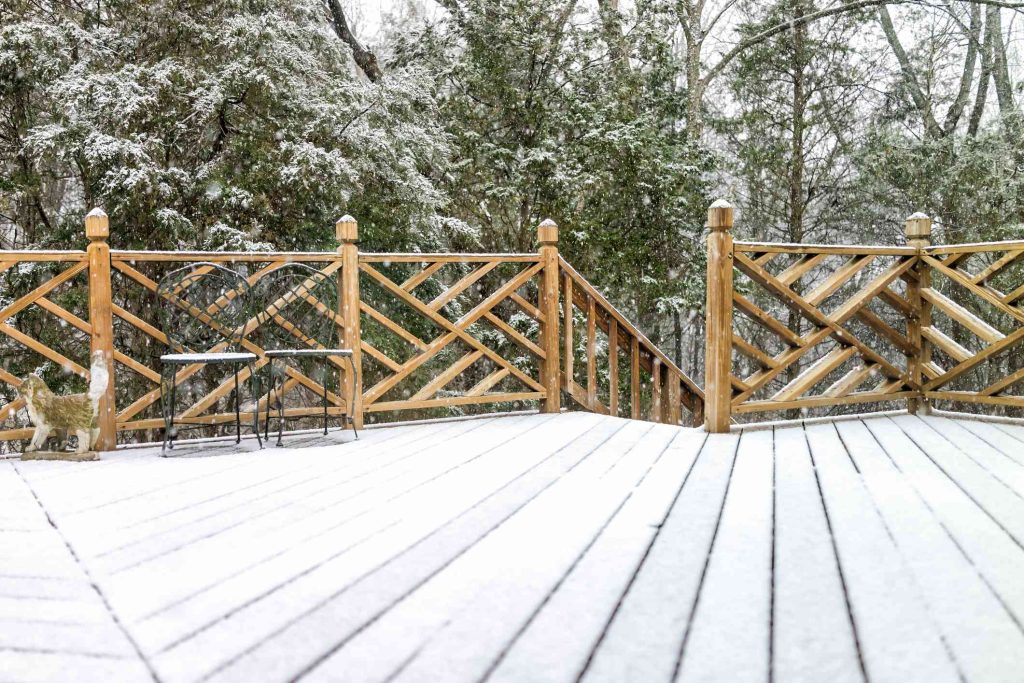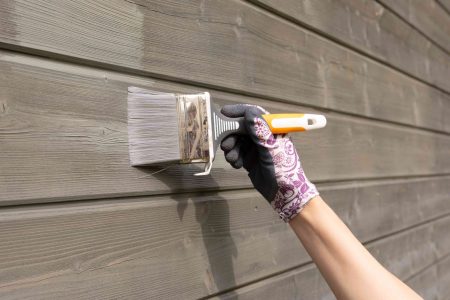When the weather is beautiful, a well-cared-for deck is one of the best ways to enjoy it. However, when the temps take a downward turn, it’s crucial to take some time to prepare your deck for the winter ahead.
Preparing a deck for colder weather isn’t rocket science, but there are a few details you’ll want to cover to help it weather the cold all winter long. Here are eight ways to prepare a deck for colder weather to ensure it’s ready for enjoyment come springtime.
Clear the Deck
- Remove your outdoor furniture. Rather than trying to work around your outdoor furniture, take time to remove it from your deck. This will make proper deck winterization much easier and more effective.
- Remove any other large debris. Remove sticks, leaves, trash, and any other large debris that has accumulated on your deck.
- Store delicate items inside. Once you’ve winterized your deck, refrain from replacing any outdoor furniture that won’t survive the winter. Ideally, you should place all outdoor furniture inside if you have the space to do so.
Want more home reno project tips and inspiration? Sign up for our free daily newsletter for the latest how-tos, reno guides, and more!
Trim Overhanging Branches
- Cut back any imposing foliage. A sturdy branch overhanging a deck may not be cause for concern. In fact, it can be a great source of shade or a handy place to hang string lights to up your deck’s ambiance. However, any branches that may fall and damage your deck, especially under the weight of snow and ice, should be removed before the winter.
Warning
Use extreme caution when trimming branches around your deck. Never attempt to stand on furniture or deck railings. Use the appropriate tools, such as a pole saw and safety gear. If you’re unable to safely remove the branches, hire a licensed and insured professional to complete the job.
Clean the Deck
- Sweep or blow off the deck. Once you’ve removed the furniture and branches, thoroughly sweep or blow away all the debris.
- Wash the deck. Wash the deck using deck cleaner and a scrub brush. For more intense cleaning needs, employing a pressure washer may be necessary.
Inspect the Deck
- Inspect the deck boards. Once the deck is clean and dry, thoroughly inspect the deck boards to ensure there’s no rot or damage. If you suspect rot, use a screwdriver to probe the wood for softness and decay.
- Inspect fasteners. While inspecting the deck boards, take a look at the fasteners holding them in place. Hammer in any nails backing out of their holes to prevent future injuries.
- Inspect the railing and stairs. Don’t forget to check your deck railing and stairs to ensure they are strong and secure.
- Inspect frame. Head beneath your deck and thoroughly inspect all frame components including the joists, ledger, posts, and more.
- Inspect framing hardware. Look over all frame hardware to ensure it’s in solid condition and that no fasteners are loose or backing out of the wood.
- Replace and repair damaged materials. If you did locate any rotten wood or damaged hardware, repair or replace it with new materials.
Check the Sealant
- Test the seal coat. Once your deck is completely clean and dry, it’s time to properly test the sealant. To do so, lightly spray water across different areas of the deck and note whether the water beads on the surface or soaks into the wood. If the water beads, you can likely skip the sealing process before winter. If the water soaks into the wood, the deck needs to be sealed.
Reseal the Deck (if necessary)
- Let the deck dry. Before starting the resealing process, let the deck dry fully.
- Sand the deck. Sand the entire surface of the deck to remove any splintering, smooth the wood, and remove any stubborn dirt left behind after washing.
- Vacuum the deck. After sanding, thoroughly remove all sawdust and dirt using a shop vac.
- Apply deck sealant. Apply your preferred deck sealant, following the manufacturer’s instructions for application and dry times.
Keep Leaves Off the Deck
- Remove leaves and other seasonal debris. While a few colorful leaves falling on your deck may be aesthetically pleasing, too many are a recipe for disaster. More specifically, the buildup of fall leaves harbors moisture, which can quickly lead to wood rot if left undisturbed. Promptly remove fall leaves from your deck, especially before rainfall.
Clear Off Snow and Ice
- Clear snow and ice from the deck. Just like wet leaves, the accumulation of snow can wreak havoc on a deck. However, it’s not just the moisture you should be concerned with. Heavy accumulation of snow and ice adds significant weight to the deck, which may overload the capacity of the deck’s framework, leading to eventual collapse.
- Shovel snow correctly. When shoveling snow, push your shovel parallel to the deck boards rather than perpendicular to prevent scarring. If you have one, a snowblower can help reduce damage.
- Use ice melt suitable for decks. If you plan on traversing your deck throughout the winter, applying ice melt may be necessary, depending on your geographical location. When choosing an ice melt product, look for one that’s safe for use on wood.
Deck Maintenance Tips
- Reseal your deck on time. Too many people go years without resealing their deck, only to get overwhelmed at the prospect of repairing the damage that’s occurred in the meantime. This is why you see so many decks deteriorating on otherwise beautiful houses. Keep up with resealing your deck regularly to make it last as long as possible.
- Regularly clean your deck. Like many areas of the home, performing regular cleanings rather than occasional deep cleanings will help you maintain your deck’s beauty and structural integrity.
- Use a deck cleaner for stubborn grime. Sometimes sweeping and spraying off the deck isn’t enough to remove mold, mildew, and other stubborn grime. When this is the case, use a deck cleaner that won’t harm your sealant.
- Swap natural rugs for synthetic ones. While beautiful, natural rugs can harbor moisture and damage your deck. To prevent this, swap them for synthetic outdoor rugs.
- Regularly inspect your deck. Don’t wait to inspect the deck once a year. Get in the habit of visually inspecting the various deck components regularly to keep tabs on the health of your deck. Catching problems like rot and frame failure early on can save you serious money on repairs while keeping your deck safe for you and your family.
- Replace bad deck boards. If your decking is rotting or warping, pull up the individual board and replace it. For minimal warping, you can try sanding the wood to match the level of the other deck boards.
- Tighten fasteners. As you notice fasteners coming loose, tighten them. It can be helpful to keep a hammer nearby so you can hammer in any nails on the deck’s surface as they pop up.
- Move your furniture regularly. Rather than leaving your furniture in the same spot on your deck, it can be beneficial to rearrange it occasionally. This will prevent mismatched sun damage and water damage resulting from moisture accumulation beneath furniture.
- Clean between deck boards. If you look down and can’t see between your deck boards, you have a problem. Buildup in the cracks between boards is a recipe for rot, mold, and mildew, as it prevents the deck from draining water and holds moisture close to the boards. Regular cleaning can help prevent this buildup, but you may have to manually remove it if it becomes severe.
-
What kind of maintenance does a deck need?
The most important deck maintenance you can perform is regularly cleaning the deck of debris, mold, and mildew, then resealing the deck as needed. As long as you perform these two tasks consistently, you can avoid most problems with rot and deterioration.
-
How do you winterize a deck?
To winterize a deck, you must thoroughly clean it and remove all debris and buildup that could harbor moisture. Once clean and dry, test the sealant with water. If the wood soaks up water, you’ll need to reseal your deck to help your deck last through the winter.
-
How do you protect decking over winter?
The best thing you can do to protect your decking over winter is to seal it before winter comes. Beyond sealing, regularly clearing debris like leaves, snow, ice, and more will keep the deck from holding moisture that can lead to rot and other damage and decay.
Read the full article here














